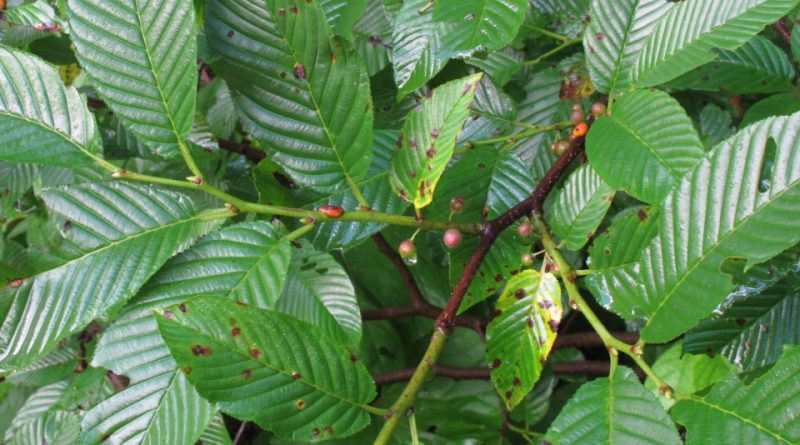Atadinus fallax
Atadinus fallax
The Ramno fallacious (Atadinus fallax (Boiss.) Hauenschild) is a shrub species belonging to the Rhamnaceae family.
Systematics –
From a systematic point of view it belongs to:
Eukaryota Domain,
Kingdom Plantae,
Subarign Tracheobionta,
Spermatophyta superdivision,
Magnoliophyta Division,
Magnoliopsida class,
Subclass Rosidae,
Order Rhamnales,
Rhamnaceae family,
Genus Atadinus,
A. fallax species.
Basionimo is the term:
– Rhamnus fallax Boiss.
The terms are synonymous:
– Rhamnus carniolicus A. Kern .;
– Rhamnus alpina Sibth. & Sm .;
– Rhamnus alpina subsp. fallax (Boiss.) Maire & Petitm .;
– Rhamnus horsehair Orph. ex Boiss .;
– Rhamnus fallax Boiss .;
– Rhamnus glaberrima Post; Oreoherzogia fallax (Boiss.) W. Vent;
– Oreoherzogia fallax subsp. liburnia W. Vent.
Etymology –
The term Atadinus of the genus was created by Rafinesque in 1838 probably giving it a fancy name as was his custom.
The specific epithet fallax comes from making him deceive: that he deceives.
Geographic Distribution and Habitat –
Atadinus fallax is a plant that grows in the central-western Mediterranean mountains, with a range centered on the southwestern European area, up to northwestern Africa. It is present especially in the Balkans while it is absent in the Pyrenees.
In Italy it is present, with two subspecies, along the Alps in Friuli, with a gap up to the Central Alps, from which it spreads along the Apennines up to Calabria, and on the mountains of Sardinia.
In Friuli Venezia Giulia there is only the subsp. fallax, mainly distributed in the east, Illyrian-Balkan; restricted to a few stations on the southernmost Julian Pre-Alps, on the border with Slovenia.
Its habitat is that of limestone cliffs and open woods, especially beech woods, with optimum in the mountain belt, banks of streams, stony and rocky places, from 600 to 1800 m.
Description –
Atadinus fallax is a 1-3 m tall shrub, with a stem that is sometimes a bit tortuous.
The bark is greyish in color, with horizontal rhomboid lenticels.
The branches are erect, rarely twisted, non-thorny at the apex and glabrous green or reddish-green twigs; greenish-white wood with an unpleasant odor.
The leaves are alternate deciduous from elliptic to oblanceolate-obovate, 2-6 cm broad and up to 12-13 cm long, with a 5-15 mm petiole; bright green shiny foil on both pages, with serrated-serrated margin and sharp apex; straight secondary veins (usually 13-20 per side) very evident, often not reaching the leaf edge and sometimes doubled near it.
The flowers are hermaphroditic (sometimes unisexual), greenish in color, with a diameter of 4-6 mm, carried on short peduncles in axillary bands of 2-7, with tetramer calyx with patent or reflected triangular laciniae; petals often missing or very small; 4 protruding erect stamens; 2-4-party style and stigma happened.
The flowering period is: May-June.
The fruit is a spherical drupe (nuculanium), subspheroidal of 7-10 mm, fleshy, glabrous, smooth, first green then glossy black when ripe.
The seeds are brown, single in 2-4 stones, dorsally furrowed, about 5 x 3 mm.
Cultivation –
The Ramno fallacious is a plant that grows in its natural state especially on limestone cliffs and in open woods, especially beech woods, with optimum in the mountain belt.
The plant was used and collected in nature for medicinal purposes or for dyeing purposes.
It essentially reproduces by seed.
Customs and Traditions –
Atadinus fallax is a plant that, like other species of the same family, has strong laxative properties, especially in the bark and fruits.
At one time both the bark and the fruit were also used to dye fabrics.
The fruits of this plant are toxic.
Preparation Method –
Atadinus fallax belongs to the group of those plants that were once used above all for medicinal purposes or for other uses.
Both the bark and the fruit were used for their laxative properties.
However, the toxicity of its fruits recommends the use of this plant under the careful supervision of experts in the sector.
Guido Bissanti
Sources
– Acta Plantarum – Flora of the Italian Regions.
– Wikipedia, the free encyclopedia.
– Useful Tropical Plants Database.
– Conti F., Abbate G., Alessandrini A., Blasi C. (ed.), 2005. An annotated checklist of the Italian vascular flora, Palombi Editore.
– Pignatti S., 1982. Flora of Italy, Edagricole, Bologna.
– Treben M., 2000. Health from the Lord’s Pharmacy, Advice and experiences with medicinal herbs, Ennsthaler Editore.
Photo source:
– https://powo.science.kew.org/taxon/urn:lsid:ipni.org:names:718330-1
Warning: Pharmaceutical applications and alimurgical uses are indicated for informational purposes only, they do not represent in any way a medical prescription; therefore no responsibility is taken for their use for curative, aesthetic or food purposes.


